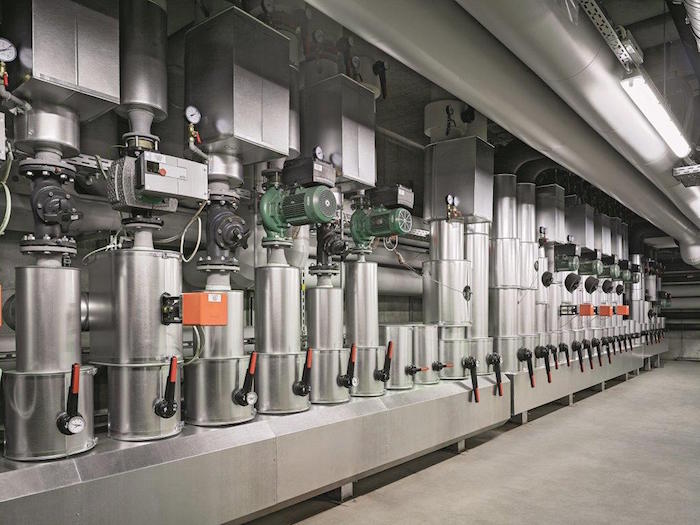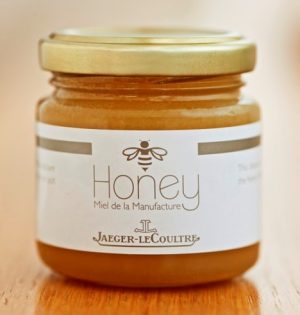Earth Day: A Look At Environmentally Conscious Watch Brands
Sunday, April 22 is Earth Day, a day designed to celebrate Earth’s riches. Begun in 1970, nearly 200 countries around the world participate in celebrating Earth Day. The thing is, we should be celebrating Earth’s beauty and bounties every day, not just on Earth Day. Some watch brands do exactly that. In fact, a host of brands including IWC, Jaeger-LeCoultre, A. Lange & Sohne and more are building sustainable facilities or adding conservation efforts to their repertoire in their efforts to go green.
While some brands support important causes that include saving our oceans (more on that coming in time for World Oceans Day in June) to reforestation, animal preservation, clean water efforts and other visible initiatives, some brands offer less visible efforts. Those initiatives run the gamut from responsible sourcing to utilizing alternate materials and creating sustainable workplaces – all commitments that the average consumer may never even hear about.
Creating ‘Clean” Workspace
A key element in sustainability revolves around manufacturing processes and creating clean, environmentally sound work places. Many of the watch brands updating and refurbishing their Manufactures and workspaces, particularly those in Switzerland, are engaging in important environmental practices that include air and water re-purification systems, geo-thermal heating systems, solar windows and power, and more — all in an effort to protect our Earth.
Most brands are making a concerted effort to adhere to the Responsible Jewelry Council (RJC) Code of Practices and to receive either re-certification or newly issued certification attesting to their commitment to the promotion of ethics, human and social rights and environmental practices.
Watch Group Efforts
LVMH:
Additionally, large jewelry and watch groups have developed their own internal programs. LVMH (which owns TAG Heuer, Hublot, Bulgari, Zenith, and more), for instance, established its LIFE program to encourage its brands to become more environmentally aware and active. LVMH is a member of the Business for Social Responsibility Network, and is committed to sustainable practices within its many factories and new constructions.
Richemont Group:
Richemont Group, owners of brands such as Cartier, IWC, Panerai, Montblanc and many more, also has insisted that its brands make concerted efforts to go carbon free and follow RJR Codes. Many of the Group’s brands are making great strides in creating environmentally sound facilities.

A. Lange & Sohne has implemented one of the largest geothermal plants in its new workshops to control air quality and temperature year round without using outside energy and staying carbon free.
IWC Sustainability Goals
IWC Schaffhausen, based in Schaffhausen, Switzerland, for instance, just issued its first sustainability report regarding its use of “best-practice” standards according to the Global Reporting Initiative (GRI). In addition to current efforts, the brand has set sustainability targets for 2020 that underscore its commitment to the UN Sustainable Development Goals. It should be noted that this brand has had essential sustainability and energy-effective practices in effect for some time now. Some of those efforts include reducing greenhouse gas emissions by 10 percent, reducing volume and weight of primary packaging by 30 percent, and more.
A. Lange & Sohne Carbon-Free Commitment
Sister brand A. Lange & Sohne, based in the Saxony region of Germany (both brands are owned by the Richemont Group), also has a host of important practices in place in its ongoing refurbishing of its facilities. In fact, the building of a new complex that began in 2012 represents cutting-edge green efforts. The two-building structure boasts 253 inclined atelier windows to assure proper lighting, and there is an impressive geothermal energy system in place to ensure climate control, air control and more. This represents Saxony’s largest geothermal effort, with 55 heat exchanges that keep the indoor climate regulated year round. Its operation also ensures a carbon free environment.
 Jaeger-LeCoultre Preservation Efforts
Jaeger-LeCoultre Preservation Efforts
While more and more brands are looking for energy efficiency, and reduction of a carbon footprint, some are also helping the local environment. Jaeger-LeCoultre, for instance, integrates a bee-keeping operation in its natural environs in the Vallee de Joux, Switzerland. The Manufacture — which has implemented a host of clean initiatives over the past decade — produces honey on-site, with a beekeeper overseeing ten hives on Manufacture property. Bees are a vital part of the healthy environment in this valley, as they transport pollen from flowers and contribute to the reproduction of plant species. In fact, several other brands in the cantons of Geneva and the outlying valleys are beginning to establish hives and other initiatives to help the bees flourish in their natural environment.
Certain privately owned watch brands, including Audemars Piguet and Rolex, have foundations that look explore and help with environmental causes, even offering awards and grants to those pursuing conservation efforts. Throughout the year, we will bring more green initiatives on the part of watch and jewelry brands to the forefront.







